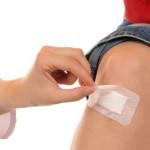 Cuts, Bumps and Sprains
Cuts, Bumps and Sprains
Looking back, it seems that many of my family’s summer camping trips were marked by a significant injury—typically involving bicycles. One year my then seven year old son (who was adjusting to his new hand brakes) crashed his bike and struck his helmeted head on a large sized boulder. Then there was the summer when my husband was mountain biking in the forest, hit a log and flipped, end-over-end, wrenching his right knee. And finally, the injury Emmy goes to my daughter who, while speeding down a paved hill, squeezed her front brakes—only—which sent her straight over her handle bars removing skin from her hands, elbow, knees, and chin.
While injuries are no respecters of seasons, spring through autumn time outdoor activities carry with them an even greater risk for cuts, bumps, and sprains. Most first aid is straight forward. But sometimes we question what to do when. Here are a few tips to pocket which might assist you when the “ouchie times” visit your own family.
CUTS: TO STITCH OR NOT TO STITCH, THAT IS THE QUESTION… The rule of thumb with deep lacerations is that the bleeding should stop within 15 minutes, with gentle pressure applied. If the bleeding continues beyond that, the wound should be checked to see if stiches are required. Keep in mind that stitches can only be applied within 24 hours of the injury.
“BRAIN BUMPS”: WHEN TO GET ‘EM CHECKED OUT There’s a lot of talk these days about concussions—and rightly so—because serious brain bumps have been ignored for far too long, and science is discovering just how much brain damage we have been stock piling for ourselves by not treating the bruised brain rightly. If, following a head injury, the person is temporarily knocked unconscious, feels dizzy/looks dazed, has a headache or altered vision, and/or experiences nausea, vomiting or fatigue, then they need to be seen by a doctor to rule out a concussion.
SPRAINS: ICE OR HEAT? This one is easy—ICE! Even though heat feels more comforting, it congests the area with blood. What you need is the anti-inflammatory, anti-spasmodic, pain-killing properties of ice when your muscles and joints are hurting.